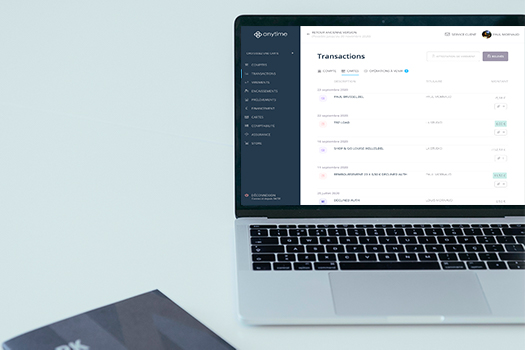Si vous souhaitez devenir autoentrepreneur, vous avez sans doute entendu parler du RSI, devenu depuis le 1er janvier 2018 la SSI (Sécurité Sociale des Indépendants). En tant que professionnel indépendant, vous serez obligé de vous affilier à cet organisme. Néanmoins, rassurez-vous, pour les micro-entrepreneurs, le fonctionnement de la SSI est bien plus simple que pour les autres statuts, et c’est d’ailleurs tout son intérêt. Pour les déclarations comme pour les paiements, les démarches sont à la portée de tous. Voici tout ce que vous devez savoir sur le fonctionnement du régime social de l’autoentrepreneur.

Quelle protection pour l’autoentrepreneur à la Sécurité Sociale des Indépendants ?
De manière générale
Même si vous bénéficiez d’un régime simplifié, vos droits sont les mêmes que pour tous les autres travailleurs indépendants rattachés à la SSI. Ainsi, vous profitez notamment de l’assurance maladie et maternité, mais aussi de droits à la retraite.
Dans le cas d’un cumul avec une activité de salarié
Il n’est pas rare de voir des salariés adopter un statut de micro-entrepreneur pour avoir un complément d’activité en plus d’un poste à temps plein ou à temps partiel. Si vous êtes dans ce cas, vous serez toujours affilié au régime général de la sécurité sociale comme salarié pour votre assurance maladie, à moins de faire le choix de vous affilier au régime des indépendants.
En revanche, vous validez des trimestres pour la retraite par la SSI à l’image de n’importe quel indépendant ou comme si votre autoentreprise était votre seule activité, indépendamment de votre activité salariée.
Conditions de déclenchement des droits
Pour déclencher vos droits, vous devrez répondre à certaines conditions, notamment en termes de chiffres d’affaires. Ainsi, en cas de chiffre d’affaires annuel inférieur à 3 862,80 €, les indemnités journalières en cas d’arrêt maladie sont nulles. À partir de ce seuil, les IJ versées correspondent à 1/730e du revenu annuel moyen des 3 dernières années civiles, dans la limite du plafond de la Sécurité Sociale.
De même, les droits aux prestations maternités ne sont ouverts qu’après 10 mois d’affiliation à la date présumée de l’accouchement, avec prise en compte des périodes d’affiliation précédentes.
Enfin, en fonction de votre activité, un minimum de chiffre d’affaires annuel est nécessaire pour valider un ou plusieurs trimestres de retraite.
Quelles sont les différentes cotisations de l’autoentrepreneur ?
L’avantage premier de l’autoentreprise réside dans la simplicité de son régime de cotisations sociales. Le calcul de vos cotisations auprès de la Sécurité sociale des Indépendants est donc relativement simple, il s’agit simplement d’un pourcentage de votre chiffre d’affaires. Ce taux dépend de votre activité :
| Activité | Taux de cotisation |
|---|---|
| • Achat revente • Restauration • Hébergement (BIC) | 12,8 % |
| Prestation de services artisanaux et commerciaux (BIC ou BNC) | 22 % |
| Activité libérale relevant de la CIPAV (BNC) | 22 % |
À ces cotisations sociales s’ajoute simplement une contribution à la formation professionnelle. Vous pouvez prétendre à des formations dès lors que vous justifiez d’un an d’activité et d’un chiffre d’affaires positif.
Comme les cotisations sociales, la CFP (Contribution à la Formation Professionnelle) est calculée avec un taux appliqué sur le chiffre d’affaires brut, selon votre type d’activité. + Commerçants : 0,1 % + Professions libérales : 0,3 % + Artisans : 0,3 %
Cas du Prélèvement libératoire sur le revenu
L’autoentrepreneur peut décider de choisir le prélèvement libératoire de l’impôt sur le revenu. Il paie alors cet impôt selon un pourcentage de son chiffre d’affaires, en même temps que les cotisations sociales. Cela n’est possible que sous certaines conditions. En effet, en 2018, votre revenu fiscal de référence de l’année 2016 ne doit pas excéder 26 818 € par part de quotient familial en 2016 pour pouvoir y accéder.
Le taux appliqué est fixe et dépend de la nature de votre activité. + 1 % pour les activités de vente ou de prestations d’hébergement (à l’exclusion de la location de locaux d’habitations meublés dont le taux est de 1,7 %). + 1,7 % pour les activités de prestations de services relevant des BIC (bénéfices industriels et commerciaux). + 2,2 % pour les activités de prestations de services ou les activités libérales relevant des BNC (bénéfices non commerciaux).
Ce prélèvement s’ajoute donc aux différentes cotisations sociales. Ce versement est définitif et non-remboursable.
Déclarer et payer à la SSI
Quand payer ses cotisations sociales ?
Le paiement des cotisations sociales à la Sécurité Sociale des Indépendants peut s’effectuer selon un rythme choisi par l’assuré. Il dispose de 2 possibilités. + Le paiement trimestriel: déclaration de chiffre d’affaires à partir du 1er du mois suivant la fin du trimestre (avril, juillet, octobre, janvier), paiement à partir du 30 ou 31 du même mois ou 1er du mois suivant. + Le paiement mensuel : déclaration de chiffre d’affaires à partir du 1er du mois suivant, paiement à partir du 30 ou 31 du même mois ou 1er du mois suivant.
Le choix de l’autoentrepreneur est valable pour une année civile. Pour changer de modalité de paiement, la demande doit être réalisée à l’administration avant le 31 octobre pour l’année suivante.
Comment déclarer son chiffre d’affaires et payer mes cotisations ?
La déclaration de chiffre d’affaires est une formalité très simple à accomplir, qui ne nécessite pas l’implication d’un comptable. Elle peut être réalisée en ligne, sur le site autoentrepreneur.fr, ce qui permet de payer par télépaiement ou par carte bancaire. Elle peut aussi être faite par courrier en remplissant le formulaire reçu et en le renvoyant avec le paiement : + au centre de paiement de la Sécurité sociale des Indépendants si vous êtes artisan ou commerçant + à l’Urssaf si vous exercez une profession libérale
Attention ! Veillez à réaliser vos déclarations SSI en temps et en heure, sans quoi vous encourez des majorations de retard qui seront peut-être plus élevées que vos cotisations ! Sachez que même un chiffre d’affaires nul doit être déclaré.
Vous savez à présent tout ce qu’il y a à savoir sur le régime social de l’autoentrepreneur. Ce régime simplifié est idéal pour débuter dans l’aventure de l’entrepreneuriat en permettant de se faire connaître et de développer une clientèle sans prendre de risque. C’est le statut idéal pour un complément d’activité.








